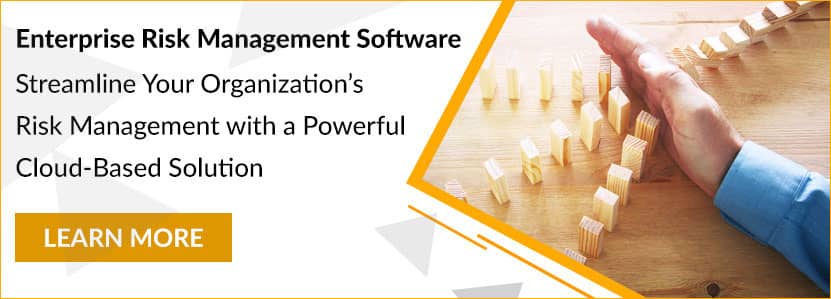Home/ Blog / Transforming Your Risk Management Framework with Risk Libraries
An organization needs to be aware of a risk in order to assess, track, manage, and mitigate the risk. The issue is that oftentimes an organization may realize too late that there was a risk that is overlooked. As the famous speech goes, there are known unknowns but much more dangerous are the ‘’unknown unknowns’’ – the former being things the organization knows about but does not have all the details on, while the latter are the ones that the organization does not even know it is missing.
If an organization knows about risk but does not have all the required information it needs to manage, it is still possible to track the risk or initiate a process which provides all the data required to manage and mitigate risk. However, if a risk is not present in the risk portfolio, it will keep increasing in severity and causing damage to the organization until it has been detected.

Difficulties in Finding Gaps in the Risk Framework
The problem with finding gaps in the risk framework is that a business can only detect an undetected risk if the risk affects the business in some way. However, by that time it is already too late to completely manage the risk. One approach to ensure that the organization has identified all the relevant risks is to reassess the entire risk portfolio being used in the organization. This is a much bigger undertaking than it may seem.
This does not mean that the organization needs to look and its risk portfolio and reassess the risks that are already in this portfolio, because the whole point is to detect risks that are not a part of the risk portfolio but should be. This essentially means that in order to discover all the risks the organization will have to reevaluate each process being used and then ensure that they adequately assess all the risks affecting each process.
Undertaking such a project would require an incredible amount of labor. The problem is that the risks that are businesses need to manage are constantly evolving. New risks emerge, older risks fade away, and the severity of the different risks changes at different rates. This means that an organization cannot simply do a reassessment of its entire framework one time, it needs to be evaluated periodically to make sure that there are no new risks that are undetected. The reassessment quickly becomes an unsustainable approach for most organizations.
Getting a risk library helps banks ensure that there are no undetected risks or missing controls in their organization's risk management framework. Share on XThe power of risk libraries
Every organization maintains a risk library, which contains a list of all the risks that are being managed and tracked. Organizations can enhance their risk management processes by integrating risk libraries from the right sources. It is important to note that each industry and type of organization will have its own risks, and the risk library needs from the right industry and for the same type of organization. Getting such a risk library helps banks ensure that there are no undetected risks or missing controls in their organization.
How Risk Libraries help Organizations
Instead of spending weeks or even months analyzing each process in use within the organization, the risk team gets a checklist which allows them to instantly understand what needs to be improved within the organization. Another advantage of these risk libraries is that they have information about risks that are otherwise hard to detect. These risk libraries are curated by experts who have decades of experience in risk management. Their experience and insights are built into the library. This is very important in the specialized fields and highly regulated industries.
Risk libraries are also an essential tool for businesses that are entering a new industry. A risk library of that industry doesn’t just help risk managers, it also helps the rest of the management team because it provides an in-depth view of all the risk requirements that need to be met in the new industry.
The process becomes even more efficient if the risk library is integrated within the risk management platform being used in the organization. Integrating the risk library within the risk management platform ensures that whenever the risk library is updated by the people curating it, the updates are automatically added to the organization’s risk management framework as well.
Interested in seeing how your bank can transform its risk management framework instantly with the help of a risk library? Get in touch with us for the American Bankers Association (ABA) risk library which has now been integrated within Predict360 and is available for no additional cost for active ABA members. To see the library in action sign up for our webinar with ABA happening on 13th April 2021.
Request a Demo
Complete the form below and our business team will be in touch to schedule a product demo.
By clicking ‘SUBMIT’ you agree to our Privacy Policy.




